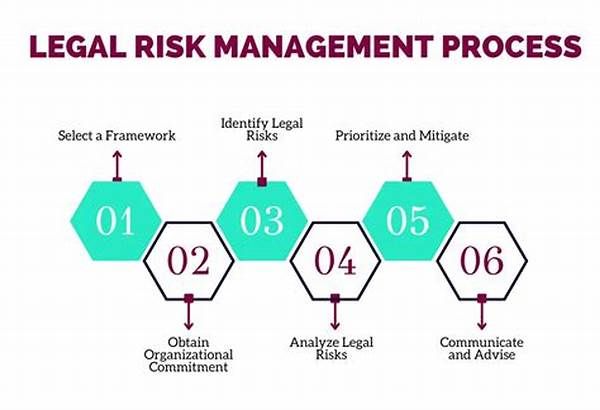In a world where data possibly holds the answers to our most pressing legal questions, “data-driven legal risk management” is becoming an essential tool for law firms and corporate legal departments. Imagine navigating a maze blindfolded. Now, imagine removing the blindfold and seeing the maze laid out clearly before you. That’s the power of leveraging data to anticipate legal pitfalls. The traditional approach to legal risk management often feels like a reactive game of chess, constantly strategizing several moves ahead. But with data-driven insights, companies can proactively identify risks, making informed decisions long before they become problems. Tapping into vast data lakes, legal professionals can not only foresee potential disputes but can also mitigate them effectively.
With the advent of big data, nearly every industry is undergoing a data revolution. Why should legal practices be an exception? Legal professionals can leverage the power of analytics to scrutinize past judgments, track regulatory changes, and even predict litigation outcomes, ensuring they stay one step ahead. Employing sophisticated algorithms and artificial intelligence, firmer grounds can be established in legal strategy, saving time, costs, and fostering a culture of preparedness. For someone still on the fence about adopting data-driven legal risk management, consider this: would you rather navigate the turbulent waters of today’s legal landscape with or without a map?
Navigating the Legal Risk Terrain with Data
Data-driven legal risk management isn’t just about anticipating potential litigation; it’s about revolutionizing the way law firms operate. It’s akin to going from a dimly lit room to one that’s brightly illuminated. Through thorough data analysis, legal teams can spot patterns in client behavior, regulatory mandates, and global market trends. This change in perspective empowers them to offer insightful advisory services, making them invaluable to clients. Today’s law firms are under immense pressure not just to deliver results but also to demonstrate value. By integrating data-driven strategies into their practice, they can streamline operations and enhance client satisfaction.
Imagine a world where legal strategies are backed by facts, not just hunches. Data analytics allows practitioners to simulate various scenarios, predicting possible outcomes, and formulating strategies that are grounded in empirical evidence. Isn’t it time we redefined what it means to deliver exceptional legal services? As we pivot to a data-driven legal risk management approach, the goal is simple: be proactive, not reactive. As the landscape becomes more complex, leveraging data isn’t just smart — it’s essential.
Whether you’re a seasoned lawyer or fresh out of law school, understanding the value of data in legal risk management will arm you with a competitive edge in today’s fast-paced world. The opportunity is ripe: embrace a data-driven approach and take control of your narrative. Allow data to illuminate and drive your decisions.
Structure for Data-Driven Legal Risk Management
Legal Risk Management in the Digital Age
Embracing data-driven methodologies isn’t about playing catch-up. It’s about seizing an opportunity and steering the industry towards a more informed future. By aligning legal strategies with data insights, legal professionals can offer unmatched advisory services.
The Role of Analytics in Legal Strategy
To truly understand the role of analytics in legal strategy, one must look at the analytics toolkit: predictive modeling, machine learning algorithms, and scenario analysis. These tools transform abstract risks into quantifiable metrics, enabling legal teams to craft informed strategies.
Discussing Data-Driven Legal Risk Management
Navigating the world of legal risk management, there’s a palpable shift happening toward data-driven methodologies. Legal practitioners are now embracing this innovative approach, recognizing that it’s not just a trend but a necessary evolution. The growing complexity of the legal landscape requires more than intuition; it demands precision and prediction. Data-driven legal risk management offers that, allowing professionals to navigate through potential pitfalls with insight and foresight. It’s like having a legal GPS, guiding firms to safer harbors in stormy seas.
But why is this shift so crucial? Traditional legal practices, while tried and tested, sometimes lack the adaptability required to handle rapid changes. With data at their fingertips, legal teams can swiftly adapt to new regulations, anticipate changes in the market, and respond to client needs more effectively. There’s a sense of empowerment that comes from data-driven insights. They transform uncertainty into opportunity, risks into strategies, and potential failures into stories of success. In a world that’s increasingly leaning on digital solutions, the legal industry cannot be left behind.
However, transitioning to a data-driven legal risk management approach requires more than just buying the latest software. It involves a paradigm shift. Firms must foster a culture that values data. Lawyers, traditionally resistant to change, need to embrace this new way of working. Training, workshops, and continuous learning become essential. And as firms collect and analyze data, confidentiality and integrity must be maintained. Clients trust firms with sensitive information, and it’s imperative that this trust is upheld.
In conclusion, data-driven legal risk management offers a transformative potential that could redefine industry norms. By leveraging data, legal professionals can not only predict risks but also provide proactive solutions, enhancing client satisfaction and business outcomes. The opportunity to harness the power of data is here, and those who embrace it stand to gain significantly in the evolving legal landscape.
Mapping a New Path in Legal Risk
What does the future hold for legal professionals who embrace data-driven methodologies? The horizon is filled with possibilities. With data, firms can anticipate regulatory changes, understand client behavior, and craft strategies that are both innovative and efficient.
Collaborative Efforts with Technology
Just as no firm can survive in isolation, effective data-driven legal risk management involves collaboration with technology partners. By integrating the right tools, firms can maximize data’s potential, turning raw numbers into actionable strategies.
Illustrations of Data-Driven Legal Risk Management
Embracing the future means embracing data. As more firms recognize the power of data-driven legal risk management, they pave the path for a more informed and agile legal landscape, ready to tackle the challenges of tomorrow.

